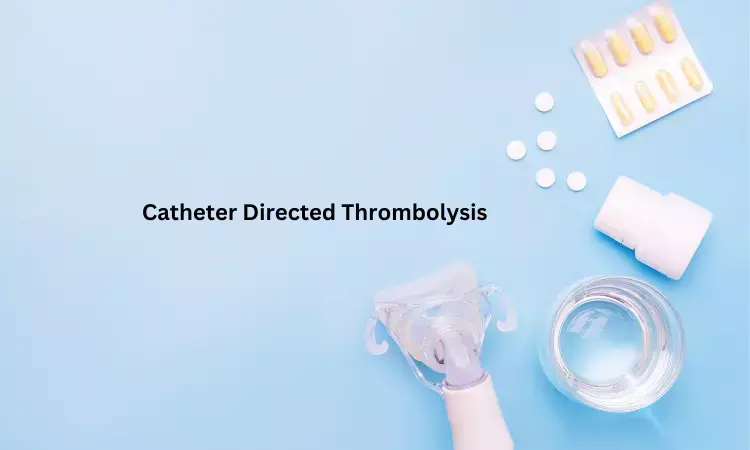- Home
- Medical news & Guidelines
- Anesthesiology
- Cardiology and CTVS
- Critical Care
- Dentistry
- Dermatology
- Diabetes and Endocrinology
- ENT
- Gastroenterology
- Medicine
- Nephrology
- Neurology
- Obstretics-Gynaecology
- Oncology
- Ophthalmology
- Orthopaedics
- Pediatrics-Neonatology
- Psychiatry
- Pulmonology
- Radiology
- Surgery
- Urology
- Laboratory Medicine
- Diet
- Nursing
- Paramedical
- Physiotherapy
- Health news
- Fact Check
- Bone Health Fact Check
- Brain Health Fact Check
- Cancer Related Fact Check
- Child Care Fact Check
- Dental and oral health fact check
- Diabetes and metabolic health fact check
- Diet and Nutrition Fact Check
- Eye and ENT Care Fact Check
- Fitness fact check
- Gut health fact check
- Heart health fact check
- Kidney health fact check
- Medical education fact check
- Men's health fact check
- Respiratory fact check
- Skin and hair care fact check
- Vaccine and Immunization fact check
- Women's health fact check
- AYUSH
- State News
- Andaman and Nicobar Islands
- Andhra Pradesh
- Arunachal Pradesh
- Assam
- Bihar
- Chandigarh
- Chattisgarh
- Dadra and Nagar Haveli
- Daman and Diu
- Delhi
- Goa
- Gujarat
- Haryana
- Himachal Pradesh
- Jammu & Kashmir
- Jharkhand
- Karnataka
- Kerala
- Ladakh
- Lakshadweep
- Madhya Pradesh
- Maharashtra
- Manipur
- Meghalaya
- Mizoram
- Nagaland
- Odisha
- Puducherry
- Punjab
- Rajasthan
- Sikkim
- Tamil Nadu
- Telangana
- Tripura
- Uttar Pradesh
- Uttrakhand
- West Bengal
- Medical Education
- Industry
Risk of bleeding and death lower in catheter-directed thrombolysis compared to systemic thrombolysis

Pulmonary embolism (PE) is a growing threat as its the third leading cause of death from cardiovascular disease after myocardial infarction and stroke. Therapeutic options for intermediate- or high-risk pulmonary embolism (PE) include anticoagulation, systemic thrombolysis and catheter-directed thrombolysis (CDT); however, the role of CDT remains controversial.
Researchers compared the efficacy and safety of CDT with other therapeutic options using network meta-analysis. Study published in Canadian Medical Association Council reported anticoagulation when compared with CDT was associated with a lower risk of death and a similar risk of intracerebral hemorrhage.
David Planer and team conducted searched PubMed (MEDLINE), Embase, ClinicalTrials.gov and Cochrane Library from inception to Oct. 18, 2022. We included randomized controlled trials and observational studies that compared therapeutic options for PE, including anticoagulation, systemic thrombolysis and CDT among patients with intermediate- or high-risk PE. The efficacy outcome was in-hospital death. Safety outcomes included major bleeding, intracerebral hemorrhage and minor bleeding.
The key findings of the study are
• They included data from 44 studies, representing 20 006 patients. Compared with systemic thrombolysis.
• CDT was associated with a decreased risk of death (odd ratio [OR] 0.43, 95% confidence interval [CI] 0.32–0.57), intracerebral hemorrhage (OR 0.44, 95% CI 0.29–0.64), major bleeding (OR 0.61, 95% CI 0.53–0.70) and blood transfusion (OR 0.46, 95% CI 0.28–0.77).
• However, no difference in minor bleeding was observed between the 2 therapeutic options (OR 1.11, 95% CI 0.66–1.87).
• Compared with anticoagulation, CDT was also associated with decreased risk of death (OR 0.36, 95% CI 0.25–0.52), with no increased risk of intracerebral hemorrhage (OR 1.33, 95% CI 0.63–2.79) or major bleeding (OR 1.24, 95% CI 0.88–1.75).
Researchers concluded that “With moderate certainty of evidence, the risk of death and major bleeding complications was lower with CDT than with systemic thrombolysis. Compared with anticoagulation, CDT was associated with a probable lower risk of death and a similar risk of intracerebral hemorrhage, with moderate certainty of evidence. Although these findings are largely based on observational data, CDT may be considered as a first-line therapy in patients with intermediate- or high-risk PE.”
Reference: David Planer, Stav Yanko, et al; Catheter-directed thrombolysis compared with systemic thrombolysis and anticoagulation in patients with intermediate- or high-risk pulmonary embolism: systematic review and network meta-analysis; CMAJ Jun 2023, 195 (24) E833-E843; DOI: 10.1503/cmaj.220960.
MSc. Neuroscience
Niveditha Subramani a MSc. Neuroscience (Faculty of Medicine) graduate from University of Madras, Chennai. Ambitious in Neuro research having worked in motor diseases and neuron apoptosis is interested in more of new upcoming research and their advancement in field of medicine. She has an engrossed skill towards writing and her roles at Medical dialogue include Sr. Content writer. Her news covers new discoveries and updates in field of medicine. She can be reached at editorial@medicaldialogues.in
Dr Kamal Kant Kohli-MBBS, DTCD- a chest specialist with more than 30 years of practice and a flair for writing clinical articles, Dr Kamal Kant Kohli joined Medical Dialogues as a Chief Editor of Medical News. Besides writing articles, as an editor, he proofreads and verifies all the medical content published on Medical Dialogues including those coming from journals, studies,medical conferences,guidelines etc. Email: drkohli@medicaldialogues.in. Contact no. 011-43720751


